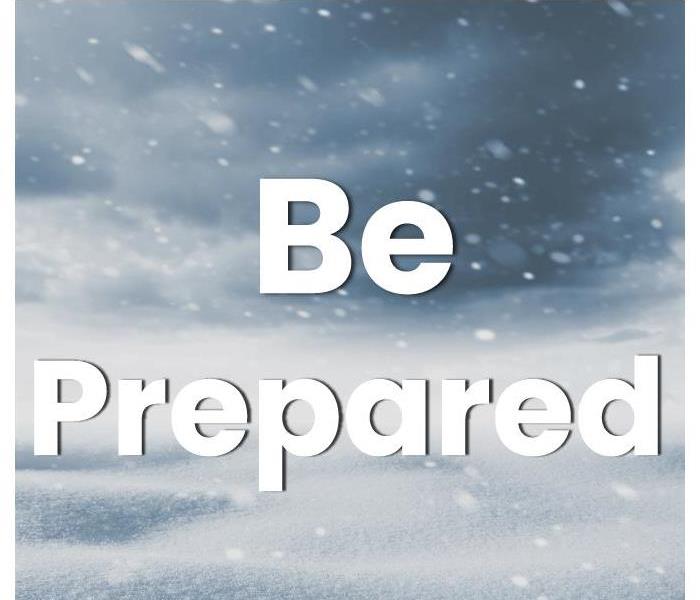How To Prepare Your Home for a Blizzard
12/13/2022 (Permalink)
Prepare Your Home for a Blizzard
If you live in a region that sees blizzards, then you know how nerve-wracking it can be to be caught unprepared. Blizzards are powerful storms with high winds and heavy snowfall — and they can happen quickly. Fortunately, there are some simple steps you can take to prepare your home for a blizzard.
Take some simple steps to prepare before a blizzard happens.
- Keep a list of emergency numbers handy.
- Have a plan in case you are stranded.
- Have a first aid kit on hand.
- Have enough food and water for your family.
- Stock up on flashlights and batteries, as well as blankets and sleeping bags to stay warm.
Keep Snow Removal Equipment Accessible
Keeping your snow removal equipment at the ready is one of the most important steps you can take to prepare for a blizzard. Snow shovels, snowblowers and snow brushes should be stored in an easily accessible spot.
Inspect Your Fireplace and Chimney
One of the most important steps you can take to prepare your home for a blizzard is to make sure that your fireplace and chimney are in good working order. The following are some tips for ensuring that your fireplace and chimney are ready for the storm:
- Inspect the fireplace and make sure it is clean. Remove any debris from inside of it, as well as from its surrounding areas.
- Check the flue to see if it has any cracks or holes, which will allow cold air to seep in during a blizzard. If there are cracks or holes in the flue, they should be repaired immediately with duct tape or caulk before bad weather hits so as not to cause carbon monoxide poisoning during an emergency.
- Make sure all electrical appliances are turned off before attempting any repairs on gas-powered heaters or fireplaces (as these can become extremely dangerous when operated improperly).
Stock Up on Food, Water, and Supplies
The first step to blizzard preparation is to stock up on food and water. This is especially important if your family does not have any way of getting access to supplies for several days. If you live off the grid or in an area where power may be cut off, be sure to keep plenty of non-perishable foods around. You will also want ample bottled water, both for drinking and sanitation purposes; plan for one gallon per person per day.
In addition, it is wise to have emergency supplies on hand such as batteries (for flashlights), first aid kits, matches/lighters in case there's no electricity or gas running in your house once the storm hits (which could mean no hot showers). Having these basics covered means nothing can stop you from getting through this thing safely!
Protect Your Pets
You'll want to make sure your pet has a warm place to stay, as well as enough food and water. If you need to evacuate, don't forget your pets! Keep an eye on their surroundings for any signs of danger (such as downed power lines or blocked roads) so that they can be kept safe in the event of a storm.
Make sure that you have a collar with identification tags on it—this is especially important if there's ever an emergency where they could get lost, such as during heavy snowfall or flooding when visibility is poor.
If possible, keep your dog on his leash whenever he's outside playing so that he doesn't cause damage or harm others around him if he gets too excited by all the fun things happening around him (like kids snowball fights).
Check Your Car’s Emergency Kit
It’s also wise to make sure your car’s emergency kit is in good condition and ready for use. At least once a year, take all the items out of your trunk and check them off against a list of what should be inside. If any are missing, add more of those items to next year's shopping list. The same goes for clothes and blankets you keep in there: make sure they're clean and not ripped or damaged in any way. And when it comes time to use these supplies in an emergency, don't forget that you can also use them for warmth (especially if you're stuck indoors).
If the worst happens and roads are blocked by snow or ice, don't expect help anytime soon! Do what you can by shoveling roadways around your home so that emergency vehicles have better access — not just because they might save lives but also because they'll give back some sense of normalcy during uncertain times like these!
You should be prepared to face a blizzard at any time of year. Even if you don’t live in an area that gets a lot of snow, there are still other types of extreme weather that could affect your home and its surroundings. The best way to prepare for any potential emergency is by taking the time now to get ready. You never know when disaster might strike, so it’s better safe than sorry!





 24/7 Emergency Service
24/7 Emergency Service
